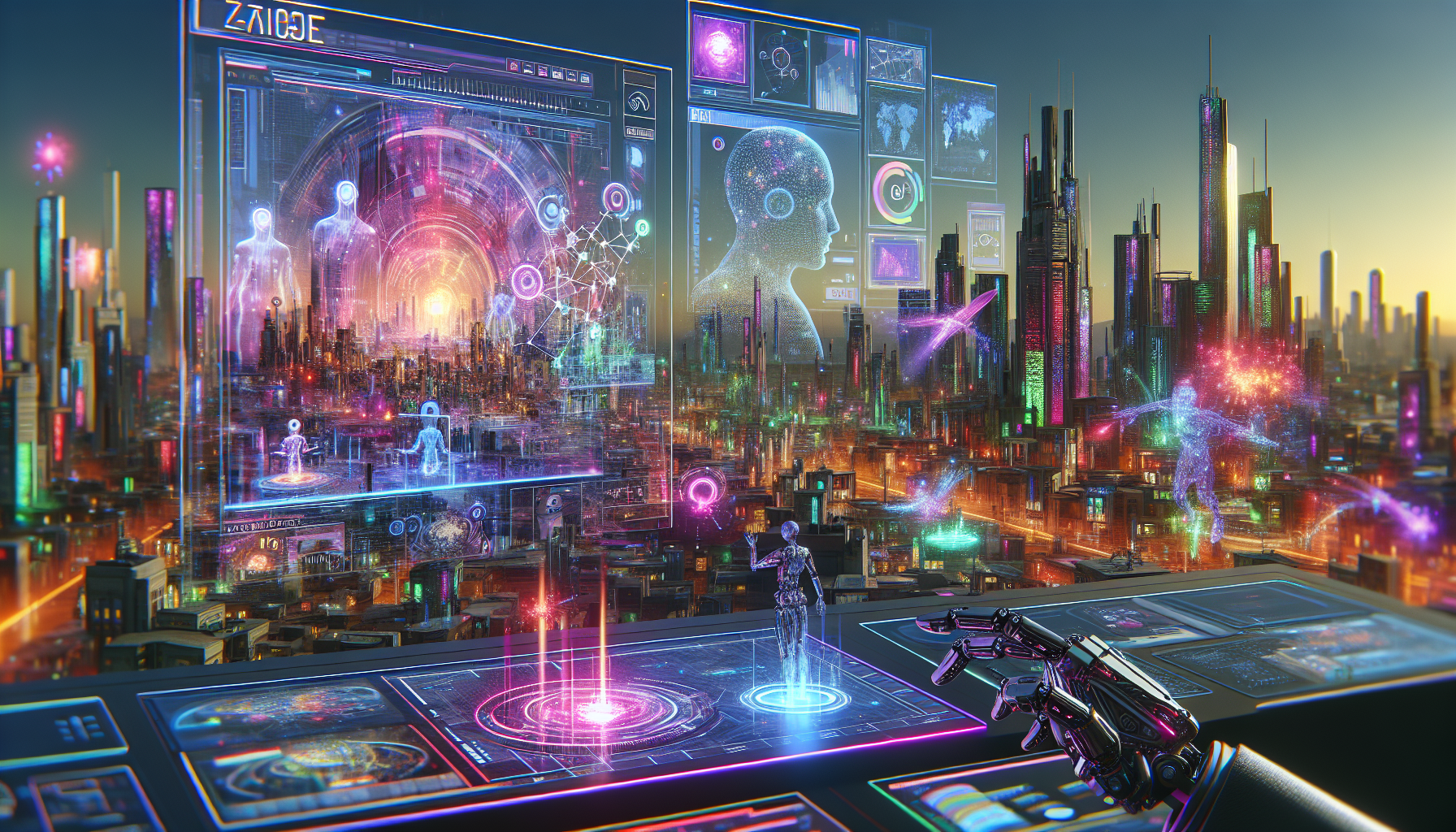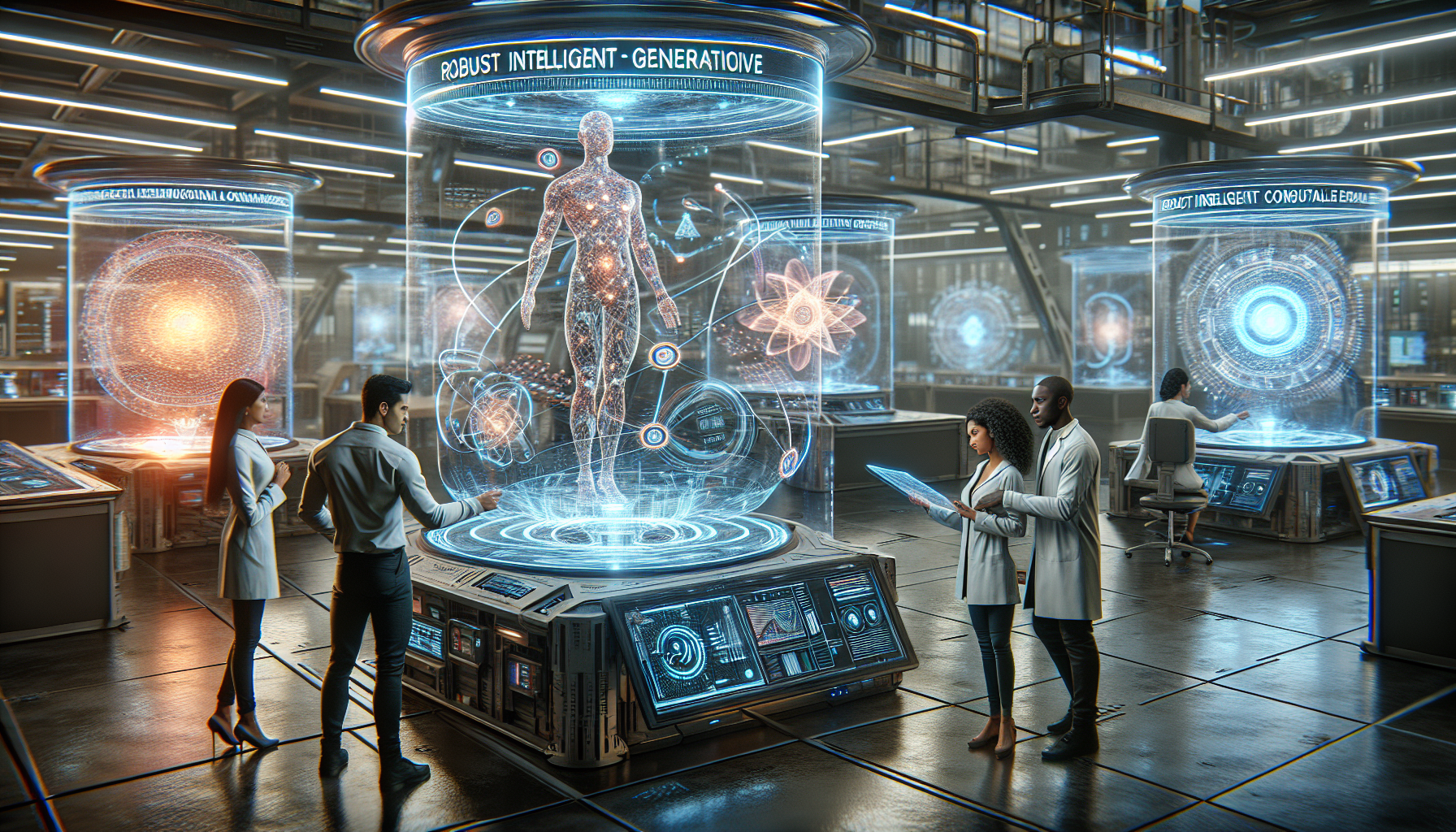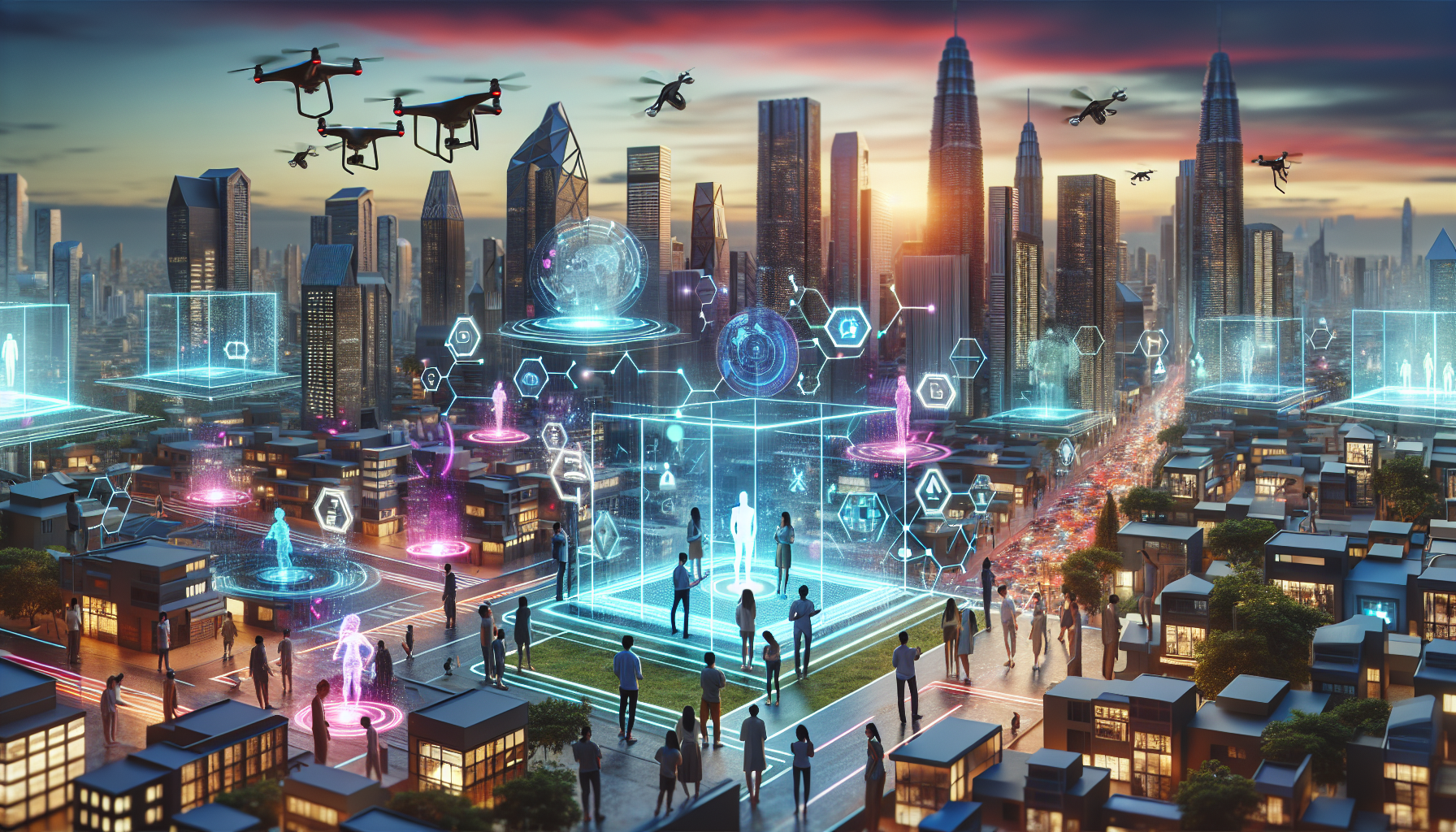Revolutionizing Dynamic Scene Reconstruction: Meet Easi3R and RIG Models!
Exploring advanced solutions and research in software development and IT services
Detailed Research & Insights
Continue reading for in-depth analysis and technical details

In a world where the ability to capture and reconstruct dynamic scenes is becoming increasingly vital, are you struggling to keep pace with the rapid advancements in technology? Dynamic scene reconstruction can feel like an insurmountable challenge, especially when traditional methods fall short of delivering real-time accuracy and efficiency. Enter Easi3R and RIG models—two groundbreaking innovations poised to revolutionize how we perceive and interact with our environments. Imagine effortlessly transforming complex visual data into stunningly accurate 3D representations that breathe life into virtual spaces! In this blog post, we will delve deep into what makes Easi3R a game-changer in the realm of dynamic scene reconstruction while exploring the intricacies of RIG models that enhance its capabilities even further. Are you ready to discover how these cutting-edge technologies not only outperform conventional techniques but also open doors to exciting applications across various industries? Join us as we embark on a journey through comparative analyses, real-world implications, and future trends that promise to reshape our understanding of spatial dynamics forever. Don’t miss out on unlocking insights that could elevate your projects or research endeavors—let’s dive in!
Introduction to Dynamic Scene Reconstruction
Dynamic scene reconstruction is a pivotal area in computer vision, focusing on accurately capturing and modeling scenes that change over time due to object movements or camera shifts. The introduction of Easi3R marks a significant advancement in this field by offering a training-free method for dynamic 4D reconstruction. By disentangling object and camera motion, Easi3R enhances the accuracy of dynamic region segmentation and camera pose estimation while generating dense point maps.
Key Features of Easi3R
Easi3R builds upon the DUSt3R model, addressing challenges associated with processing pairs affected by object dynamics. It effectively decomposes regions with minimal texture and under-observed areas, leading to improved performance in dynamic video reconstruction compared to traditional Structure from Motion (SfM) and Simultaneous Localization and Mapping (SLAM) methods. Utilizing attention adaptation during inference allows for precise segmentation results that are crucial for various applications within computer vision.
Moreover, quantitative comparisons demonstrate Easi3R's superiority over state-of-the-art models like DUSt3R regarding point cloud reconstruction quality and trajectory estimation accuracy on datasets such as DyCheck. Its innovative features—attention-guided segmentation, re-weighting mechanisms, and global alignment techniques—underscore its role in bridging static-dynamic gaps within scene reconstructions while paving the way for future research advancements in this domain.# What is Easi3R?
Easi3R is an innovative, training-free method designed for dynamic 4D reconstruction that effectively disentangles object and camera motion. By utilizing attention adaptation during inference, it achieves precise dynamic region segmentation and accurate camera pose estimation while generating a dense point map in four dimensions. This approach addresses the limitations of traditional Structure from Motion (SfM) and Simultaneous Localization and Mapping (SLAM) methods when dealing with dynamic scenes, thereby enhancing the quality of video reconstruction.
Key Features
Building on the DUSt3R model, Easi3R excels in processing pairs affected by object dynamics through advanced techniques such as attention-guided segmentation and re-weighting. It incorporates components like ViT encoders for token representation generation alongside self-attention mechanisms to improve accuracy in segmenting complex scenes. The results demonstrate significant improvements over previous state-of-the-art models, particularly evident in quantitative comparisons using datasets like DyCheck. Overall, Easi3R stands out for its ability to bridge static-dynamic reconstruction gaps while offering superior performance metrics across various computer vision applications.# Exploring RIG Models
The Recursive Imagination and Planning (RIG) model represents a significant advancement in training embodied agents within open-world environments. By synergizing reasoning and imagination, RIG enhances the agent's ability to navigate complex scenarios effectively. This model employs iterative planning without requiring environmental interaction, enabling proactive decision-making through visual forecasting and risk-aware corrections. The architecture integrates explicit reasoning with visual generation capabilities, which improves sample efficiency during training while showcasing remarkable performance across various tasks in environments like Minecraft.
Key Features of RIG Models
One notable aspect of the RIG model is its capacity for unified understanding and generation in multi-modal settings. This integration allows for better generalization and scalability across diverse tasks such as image generation and reasoning benchmarks. Experimental results indicate that incorporating lookahead reasoning significantly boosts decision-making abilities, enhancing overall performance metrics compared to traditional models. Additionally, ablation studies reveal how integrating visual imagination contributes to improved task execution—demonstrating that the combination of these elements can lead to more sophisticated interactions within dynamic environments.
By addressing challenges inherent in prior methodologies, the RIG framework sets a new standard for embodied agents' development by leveraging advanced neural network architectures tailored for complex real-world applications.

Comparative Analysis: Easi3R vs. Traditional Methods
Easi3R represents a significant advancement in dynamic scene reconstruction, particularly when compared to traditional methods like Structure from Motion (SfM) and Simultaneous Localization and Mapping (SLAM). While SfM and SLAM struggle with dynamic scenes due to their reliance on static assumptions, Easi3R effectively disentangles object motion from camera movement without the need for extensive training data. This is achieved through attention adaptation techniques that enhance segmentation accuracy during inference, allowing for precise camera pose estimation and dense point map reconstruction.
Advantages of Easi3R Over Traditional Methods
Traditional methods often falter in scenarios involving complex dynamics or occlusions; however, Easi3R excels by leveraging its DUSt3R architecture which addresses these limitations head-on. By employing attention-guided segmentation and re-weighting mechanisms, it improves the quality of reconstructed point clouds significantly. Quantitative evaluations demonstrate that Easi3R outperforms state-of-the-art variants in both trajectory estimation and overall reconstruction fidelity on datasets such as DyCheck. Thus, while conventional approaches may suffice for simpler tasks, they cannot match the robustness and adaptability offered by modern solutions like Easi3R in handling intricate dynamic environments effectively.# Real-World Applications of Easi3R and RIG Models
Easi3R and RIG models have significant implications across various domains, particularly in dynamic scene reconstruction and embodied AI. Easi3R excels in real-time applications such as augmented reality (AR) and virtual reality (VR), where accurate camera pose estimation is crucial for immersive experiences. Its ability to disentangle object motion enhances the quality of 4D reconstructions, making it ideal for robotics navigation, autonomous vehicles, and interactive gaming environments.
On the other hand, the RIG model's integration of reasoning with visual imagination presents transformative opportunities in open-world scenarios like Minecraft simulations or robotic exploration tasks. By enabling agents to predict complex environmental dynamics effectively, RIG can improve decision-making processes in uncertain settings. This synergy between reasoning and imagination not only boosts sample efficiency but also fosters advancements in training methodologies for AI systems operating within diverse multi-modal environments.
Key Areas of Impact
-
Autonomous Systems: Both models contribute significantly to enhancing the capabilities of autonomous systems by improving their understanding of dynamic scenes.
-
Robotics: The application extends into robotics where precise spatial awareness is essential for navigating unpredictable terrains or interacting with moving objects.
By leveraging these advanced techniques from Easi3R and RIG models, industries can achieve more reliable performance metrics while pushing forward innovations that rely on sophisticated computer vision technologies.# Future Trends in Scene Reconstruction Technology
The future of scene reconstruction technology is poised for significant advancements, particularly with the emergence of methods like Easi3R. This training-free approach to dynamic 4D reconstruction emphasizes disentangling object and camera motion, which enhances accuracy in segmenting dynamic regions and estimating camera poses. By leveraging attention adaptation during inference, Easi3R not only improves point cloud reconstruction but also addresses limitations found in traditional Structure from Motion (SfM) and Simultaneous Localization and Mapping (SLAM) techniques.
Integration of Advanced Neural Architectures
As we look ahead, integrating advanced neural architectures such as Vision Transformers (ViT) within models like DUSt3R will likely become more prevalent. These architectures enhance feature extraction capabilities while maintaining efficiency through token representation generation. The ongoing development of attention-guided segmentation techniques promises to further refine the quality and completeness of reconstructed scenes, making them applicable across various domains including robotics, augmented reality, and autonomous navigation systems.
Moreover, research into hybrid models that combine reasoning with visual imagination—similar to RIG—will contribute significantly to creating more intelligent agents capable of navigating complex environments autonomously. As these technologies evolve together with improvements in computational power and data collection methodologies, we can expect a transformative impact on how dynamic scenes are reconstructed across industries.

In conclusion, the advancements in dynamic scene reconstruction through Easi3R and RIG models signify a transformative leap in how we perceive and interact with our environments. These innovative approaches not only enhance accuracy and efficiency compared to traditional methods but also open up new avenues for real-world applications across various fields such as robotics, virtual reality, and autonomous systems. By leveraging cutting-edge technology, Easi3R offers streamlined processes that significantly reduce computational demands while maintaining high fidelity in scene representation. Meanwhile, RIG models introduce a novel framework that enhances adaptability to changing scenes. As we look toward the future of scene reconstruction technology, it is clear that these developments will play a crucial role in shaping immersive experiences and intelligent systems capable of understanding complex environments dynamically. Embracing these innovations will be essential for researchers and practitioners aiming to stay at the forefront of this rapidly evolving field.
FAQs about Easi3R and RIG Models in Dynamic Scene Reconstruction
1. What is dynamic scene reconstruction, and why is it important?
Dynamic scene reconstruction refers to the process of capturing and modeling scenes that change over time, such as moving objects or varying environmental conditions. It is crucial for applications like robotics, augmented reality (AR), virtual reality (VR), and autonomous vehicles, where understanding real-time changes in the environment enhances interaction and decision-making.
2. What are Easi3R models?
Easi3R stands for "Efficient Adaptive Scene Interaction with Real-time Reconstruction." It is a cutting-edge model designed to improve the efficiency and accuracy of dynamic scene reconstruction by utilizing advanced algorithms that adaptively process data from various sources, enabling faster updates to reconstructed scenes.
3. How do RIG models differ from traditional methods in scene reconstruction?
RIG models leverage a novel approach based on geometric representations combined with machine learning techniques to enhance the fidelity of reconstructions compared to traditional methods. While conventional approaches often rely heavily on static images or limited sensor data, RIG models can dynamically integrate multiple inputs for more accurate real-time rendering.
4. In what real-world scenarios can Easi3R and RIG models be applied?
Easi3R and RIG models have numerous practical applications including but not limited to: - Autonomous navigation systems for drones or self-driving cars. - Interactive gaming environments where player movements influence game dynamics. - Advanced surveillance systems capable of tracking moving subjects within complex environments. - Augmented reality experiences that require seamless integration between digital content and physical surroundings.
5. What future trends should we expect in scene reconstruction technology?
Future trends in scene reconstruction technology may include increased integration of artificial intelligence for better predictive modeling, enhanced sensor technologies providing richer data inputs, improved computational efficiencies allowing real-time processing on mobile devices, and greater collaboration across industries leading to innovative applications beyond current capabilities.
